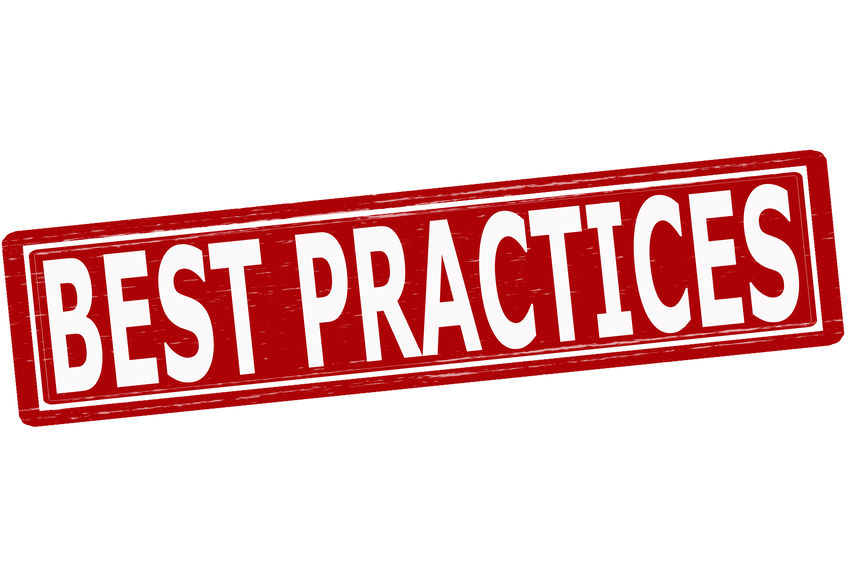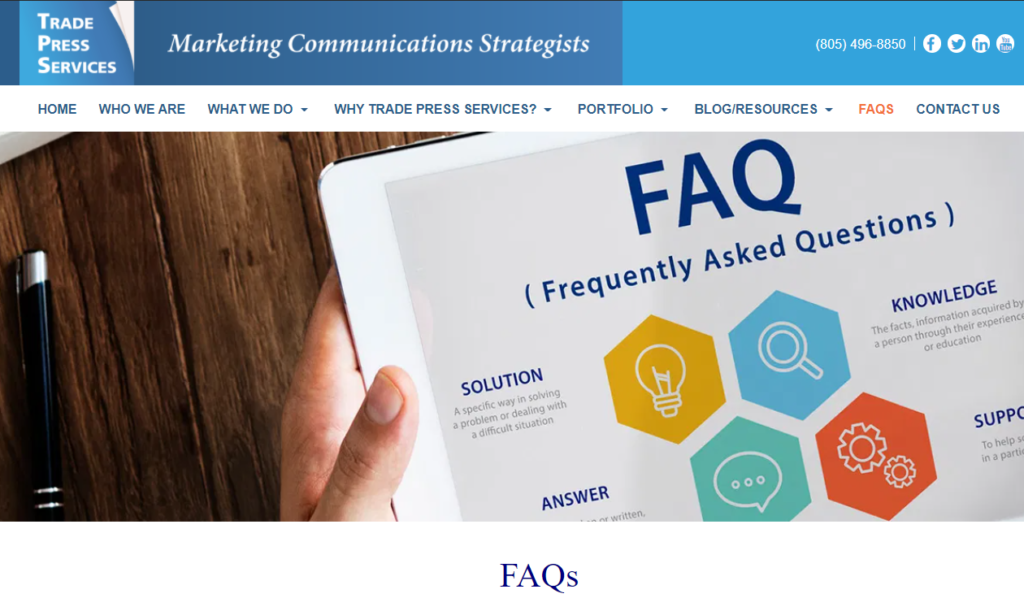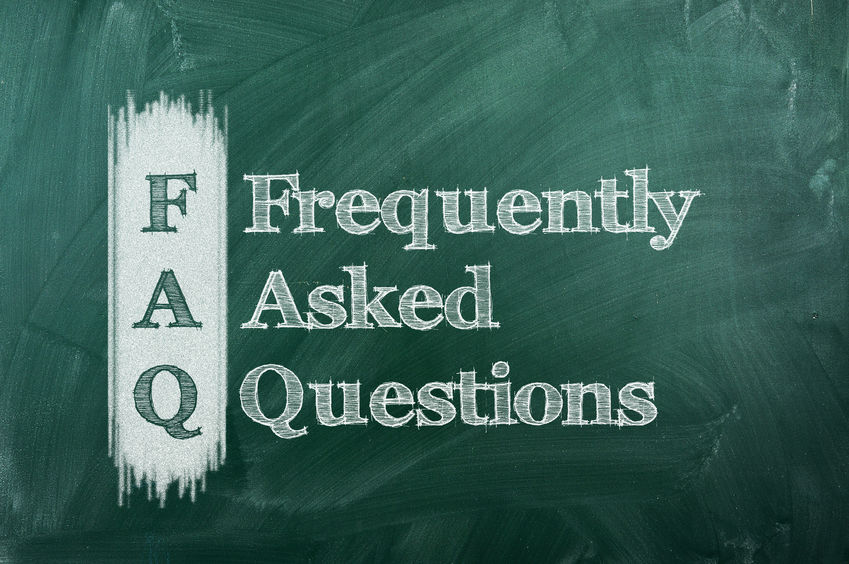The compilation of frequently-asked-questions (FAQ) pre-dates the internet. Salespeople and others have used it for years to learn and communicate what’s on the minds of others. In fact, the acronym FAQ was developed between 1982 and 1985 by Eugene Miya of NASA for the SPACE mailing list as a way to keep up with the common questions of system users. FAQs, whether they exist in print or digital format, help prospects and customers better understand your brand, your products and services, and your corporate distinction. Posting a FAQ to your website is especially powerful because 75 percent of online customers who are looking for answers expect help within five minutes. To ensure answers are there, the FAQ page becomes a hub lead. When was the last time you optimized that page for effectiveness, user-friendliness and SEO?
Why is the FAQ Page Essential?
According to content marketing expert Chris Marr, “On average, 70% of the buying decision is made online before someone contacts a business for the first time.” Prospects are browsing your content via online publications, social media, and ultimately, your website. The FAQ page becomes an essential source to:
- Allow prospects and clients easy access to common questions
- Reduce the workload of customer service representatives
- Improve site navigation
- Increase the visibility of the website by matching and optimizing for specific search terms
- Link to or integrate within product or service pages
- Answer common objections heard during the sales process
- Guide users through the sales funnel by providing them the information they need to make a purchase decision.
FAQ Best Practices

Simply having a FAQ page doesn’t mean you’re effectively addressing the information-gathering needs of your prospects and customers. Nor does it mean that you will see an automatic jump in your SEO. Utilize the following best practices to ensure your FAQ page is optimized for success.
- Understand what your customers and prospects are asking and develop content from their point of view. As with any communication effort, understanding your target market is essential. To know what questions your prospects are asking, engage with them. Start conversations and gather insights from your network of current customers, vendors, interested prospects and business connections. Continue to optimize questions by looking at competitor’s websites, browsing common questions for your industry on Google and Quora. Browse and engage with conversations on social media or survey your website visitors or email recipients for additional insights. Speak with your salespeople and find out what questions they are hearing from their prospects and customers. Use your FAQ to embody their interests and write from their point of view.
- Keep answers clear, concise and well-reasoned. Keeping information consumable and easy to navigate is important no matter what type of content you’re creating, but it’s especially critical when it comes to the FAQ page. Users often come there for a specific reason, and they aren’t looking to spend much time digging. If the question is a yes or no question, it is naturally important to include the yes or no. It is also vital to provide a brief explanation. Customers frequently are not just looking for the “what” but also the “how” or the “why.” If content is overly promotional or an obvious sales pitch, it doesn’t belong on the FAQ page. If answers get too long or are full of jargon and acronyms, visitors will get turned off. Keep to the basics and link out to a blog, product page or other resources when more information could be helpful.
- Use a simple design and organize sensibly. FAQ pages are typically simple designs that include a list of questions and answers. Depending on the size of the list, it can be divided into categories. This layout is familiar and comfortable for visitors to navigate, which is especially important when a prospect is in need of specific information. Further, organize questions in a way that builds on an understanding of your company, services and mission. Start broad and then focus on details to help move visitors through the buyer’s journey. Organize the information in a way that guides interested prospects to the information they need to make an informed purchase decision.
- Include contact information and a call to action. The FAQ page might be the last place a prospect stops before making a decision about your product or service. Add a clear call to action that prompts them to move forward in the sales funnel, whether that’s a link to your contact page, an invitation to chat online with a representative, a form to request a proposal or free demonstration, an option to download a white paper or product catalog or the ability to join your email list.
- Update regularly. An FAQ page is an ongoing content project. As your company grows and changes, ensure your FAQ page is changing with it. Maintain a schedule to review, update and optimize the page regularly based on page analytics and feedback about user experience.
Create an Experience

For most businesses, a FAQ page is a key source for inbound leads. When visitors spend time on your website and browse your FAQ, they are more educated, more engaged and more likely to make a purchase. Make sure you’re utilizing such customer-centric resources to their fullest potential and optimize content and functionality for the best possible user experience.

